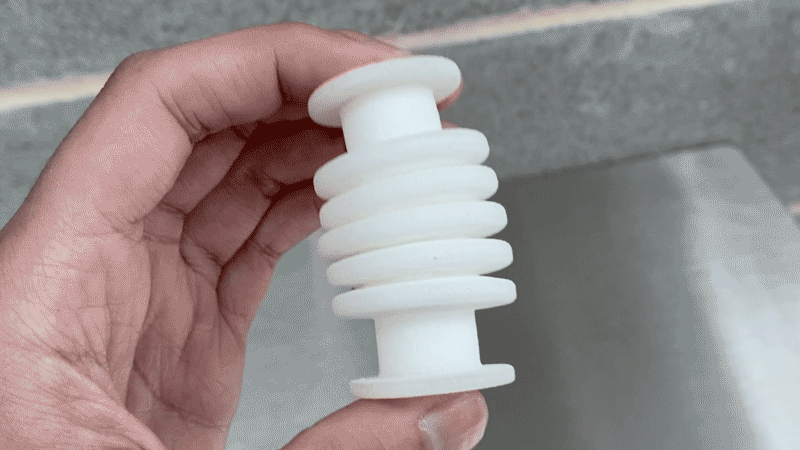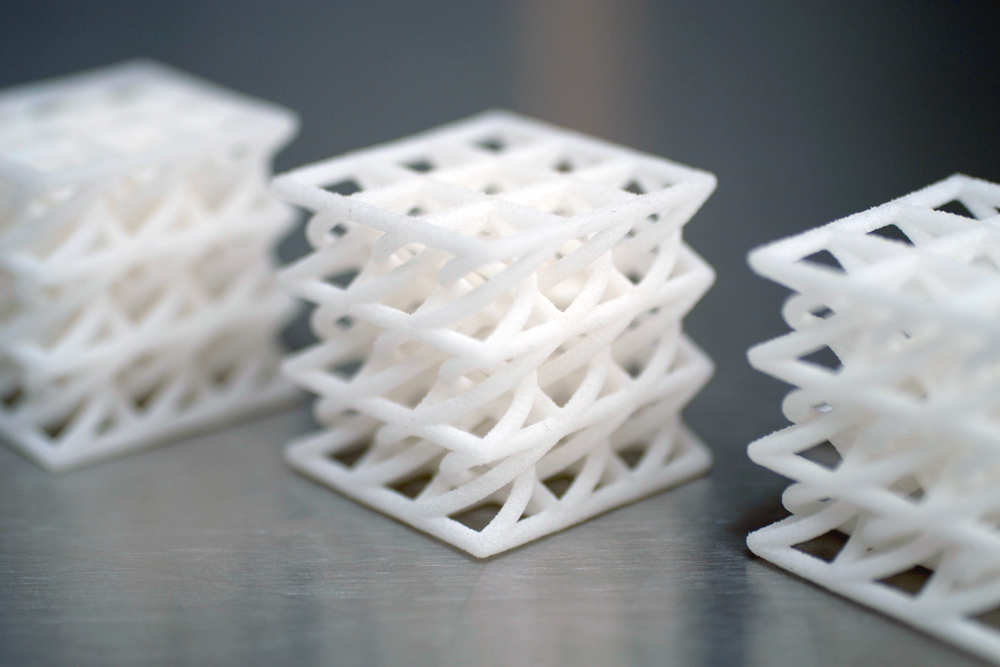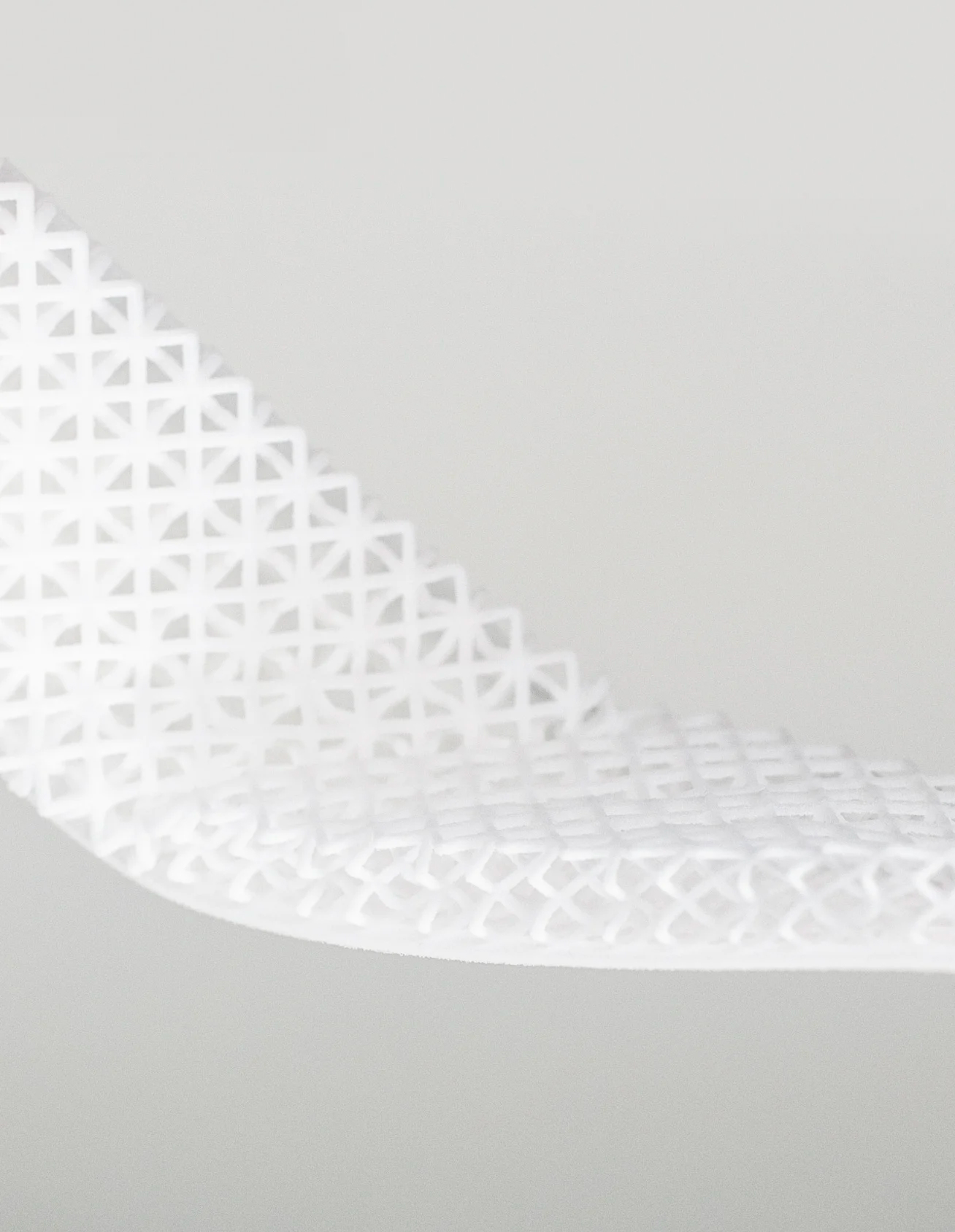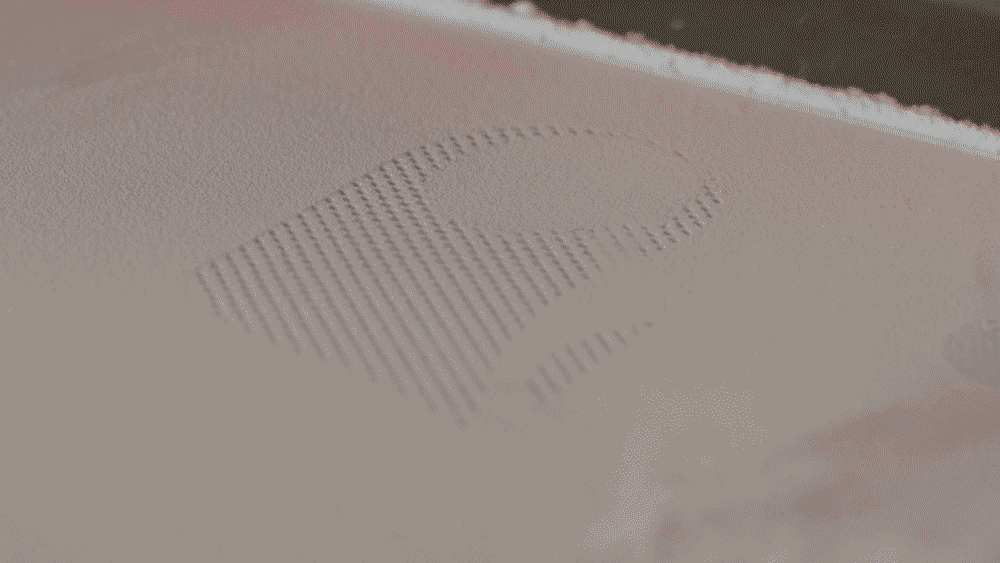SLS Flexible TPU for flexible, rubber like parts
A flexible rubber like material, demonstrating good chemical and water resistance, and long-term stability.
Overview
SLS Flexible TPU is our rubber like material. The parts made from this white material are extremely hydrolysis-resistant, with high resilience and good tribological properties. The degree of flexibility can be influenced by the part design and the choice of process parameters and can even be varied within the same part.
SLS TPU also has high UV stability.

This industrial material was developed to address a growing demand for applications that require elastomeric properties and easy processing—such as those in the footwear and sport equipment verticals, to name but a couple. The versatile 3D printing material can also be adjusted in terms of its flexibility and damping levels by modifying the structural design of parts as well as build process parameters.
Max print size: 180mm x 120mm x 120mm
Look & Feel
A finished SLS Flexible TPU part feels smooth in the hand with a soft touch granular texture on the surface.

Actual size: 30mm x 30mm x 30mm
Colour, Texture & Flex
TPU comes in matt white and can be dyed black for a fantastic looking finish.
Like other SLS parts, the surface finish has a grainy texture to it. Overall, the surface texture of a TPU part is very consistent.
Similar to rubber, the parts are flexible but still quite rigid. Thin parts (1-2mm) are very flexible but as you go thicker (>= 5mm), parts have a functional rigidity.
Finishing options: Natural | Dyed Black

Laser-sintered parts made from SLS Flexible TPU possess excellent material properties:
• Longer life than resin alternatives
• Great flexibility for rubber like parts
• Cheaper than resin based alternative
• Best elastomer for batch production runs
• Speed of manufacture
• Higher melting point than resin based elastomers
• High elasticity, good for anti vibration
• Good for impact protection
• Good chemical resistance
• Excellent long-term stability
• High selectivity and detail resolution
• Water resistant
• Cushioning and damping
Applications
• Footwear & lifestyle parts that demand elastomeric properties, e. g. handles, flexible mesh
• Automotive & industry parts, e.g. tubes, bellows, seals, gaskets
• Protective sports gear, e.g. helmet cushioning
• Applications usually made from foam can be replaced by lattice structures in EOS TPU 1301

Weaknesses
• Difficult to remove powder from holes
• Not as accurate as PA2200 (+/- 0.5mm on overall XYZ dimensions)
• Flexibility can vary slightly
• Not good for high stretch applications
Technical data
| 3D Data P110 [120µm] | Value | Unit | Test Standard | |
|---|---|---|---|---|
| Tensile Modulus | DIN EN ISO 527/868 | |||
| X Direction | 60 | MPa | ||
| Y Direction | 60 | MPa | ||
| Z Direction | 60 | MPa | ||
| Tensile Strength | DIN EN ISO 527/868 | |||
| X Direction | 7 | MPa | ||
| Y Direction | 7 | MPa | ||
| Z Direction | 5 | MPa | ||
| Elongation at break | DIN EN ISO 527/868 | |||
| X Direction | 250 | % | ||
| Y Direction | 250 | % | ||
| Z Direction | 90 | % |
| Thermal properties | Value | Unit | Test Standard | |
|---|---|---|---|---|
| Melting temperature, 10°C/min | 138 | °C | DIN 53736 |
| Shore Hardeness | ||||
|---|---|---|---|---|
| Shore Hardeness | 86A |
Datasheet
Other materials
Upload your part for an instant quote
